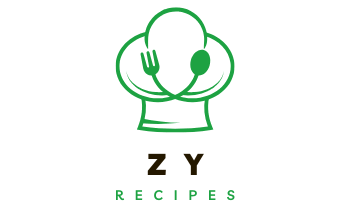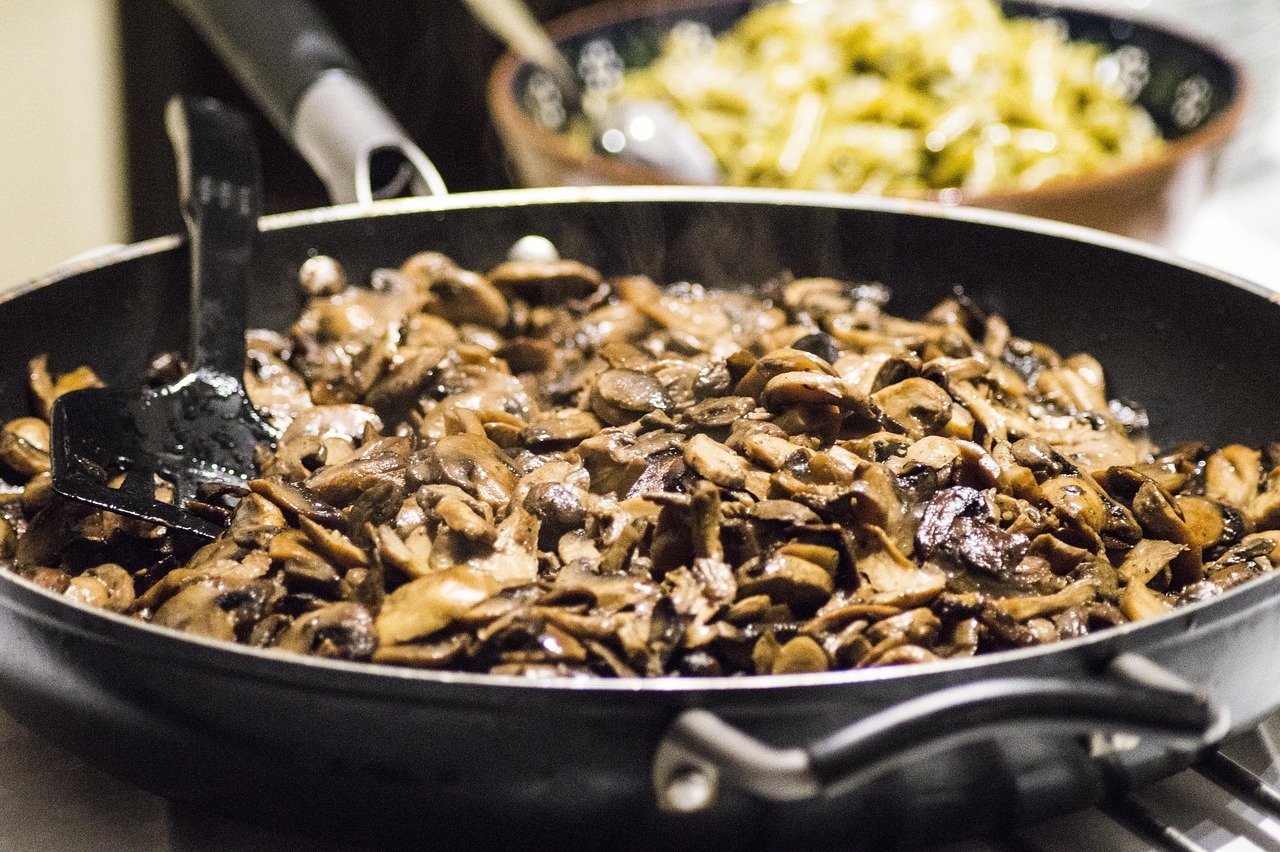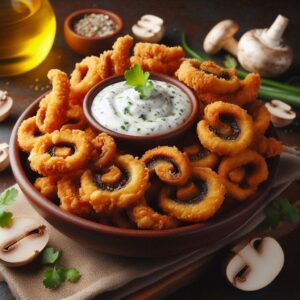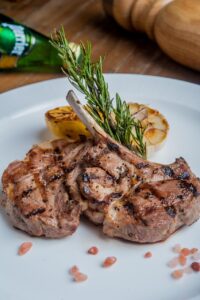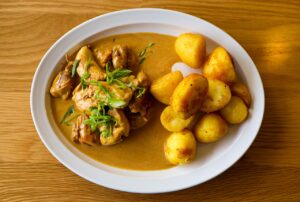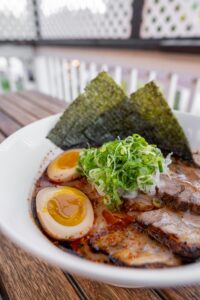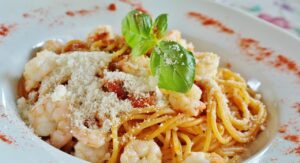Garlic Mushrooms Cauliflower Skillet: A One-Pan Veggie Sensation
Introduction to Garlic Mushrooms Cauliflower Skillet
Are you looking for a delicious, nutritious, and easy-to-prepare meal that can be cooked in just one pan? Look no further than this garlic mushrooms cauliflower skillet recipe! This veggie-packed dish combines the earthy flavors of mushrooms with the subtle sweetness of cauliflower, all enhanced by the aromatic punch of fresh garlic. Perfect for busy weeknights when cooking times are limited but you don’t want to compromise on flavor.
The beauty of this garlic mushrooms cauliflower skillet lies in its simplicity and versatility. Similar to popular one-pan favorites like sheet pan dinners or stir fry recipes, this dish allows you to create a satisfying meal without spending hours in the kitchen or dirtying multiple pots and pans. The cooking process is straightforward – everything cooks together at mediumhigh heat, allowing the flavors to meld wonderfully while maintaining the distinct textures of each ingredient.
This recipe has become one of my favorite recipes in regular rotation at home, especially on busy weeknights when I want something nutritious but don’t have time for elaborate cooking methods. It’s a dish that’s perfect for meal prep too – leftovers store beautifully in an airtight container in the refrigerator, making it ideal for quick lunches throughout the week.
While some might compare this to Asian-inspired dishes like sesame oil stir fries or teriyaki chicken, our garlic mushrooms cauliflower skillet has its own unique profile that leans more Mediterranean with its abundant use of fresh garlic, olive oil, and herbs. The dish delivers a wonderful balance of savory notes with just a touch of sweetness from the caramelized vegetables, creating a sweet and savory profile that’s irresistibly satisfying.
Whether you’re a dedicated veggie lover or simply trying to incorporate more plant-based meals into your diet, this one-pan wonder deserves a place in your regular meal rotation. Let’s dive into everything you need to know to create this garlic mushrooms cauliflower skillet that’s sure to become one of your new kitchen staples!
Ingredients Required for Garlic Mushrooms Cauliflower Skillet
Fresh Ingredients
The foundation of this garlic mushrooms cauliflower skillet relies on fresh, quality produce that brings texture, flavor, and nutritional value to your plate. Here’s what you’ll need from the fresh ingredient section of your grocery store:
- Cauliflower (1 medium head) – Look for a firm cauliflower with tight, cream-colored florets without brown spots. This versatile vegetable serves as the hearty base of our skillet dish, similar to how potato salad provides substance in Hawaiian meals or rice serves in a fried rice dish.
- Mushrooms (1 pound/450g) – You have several options here. Button mushrooms work wonderfully, but cremini (baby portobello) mushrooms offer a deeper flavor similar to how fresh ginger brings depth to dishes like huli huli chicken. For even more complexity, consider a mix of mushroom varieties including shiitake or oyster mushrooms.
- Garlic (6-8 cloves) – Fresh garlic is essential for this recipe! The aromatic punch of fresh garlic cloves sautéed at mediumhigh heat creates a foundation of flavor similar to how ginger and garlic form the base of many Asian dishes. Pre-minced garlic from a jar won’t deliver the same intensity of flavor.
- Bell Pepper (1 medium) – Red, yellow, or orange bell peppers add sweet notes and vibrant color. This ingredient adds visual appeal and a contrasting texture to your skillet, much like pineapple rings add color and sweetness to grilled dishes.
- Green Onions (1 bunch) – These add a mild onion flavor and bright green color as a finishing touch. Reserve some for garnish to add freshness at serving time, similar to how sesame seeds or green onions garnish many Asian-inspired dishes.
- Fresh Herbs (optional) – A handful of fresh thyme, rosemary, or parsley can elevate the flavor profile. Fresh herbs bring brightness to the dish in the same way that a splash of apple cider vinegar or rice vinegar adds dimension to marinades.
When selecting your fresh ingredients, aim for the highest quality you can find – farmers’ markets are ideal, but even in regular grocery stores, take time to select firm, unblemished produce. The freshness of these ingredients will directly impact the final flavor of your garlic mushrooms cauliflower skillet, just as the quality of chicken thighs would affect a chicken dish.
Pantry Staples
Beyond fresh produce, you’ll need several pantry staples to complete your garlic mushrooms cauliflower skillet. These ingredients add depth, richness, and complexity to the dish:
- Olive Oil (3-4 tablespoons) – Use a good quality extra virgin olive oil for the best flavor. This serves as your cooking medium similar to how sesame oil functions in stir fry recipes. The oil helps achieve that perfect caramelization at mediumhigh heat.
- Soy Sauce or Tamari (2 tablespoons) – This adds umami depth to the vegetables. Low-sodium varieties work well if you’re watching salt intake. The function is similar to how soy sauces add depth to marinades like those used in huli huli sauce or teriyaki chicken.
- Black Pepper (to taste) – Freshly ground black pepper provides the best flavor and aromatic quality. This basic seasoning is as essential to our skillet as it is to perfectly grilled chicken or any savory dish.
- Salt (to taste) – Kosher or sea salt is recommended for better flavor distribution. Like when seasoning chicken pieces before cooking, salt helps bring out the natural flavors of the vegetables.
- Red Pepper Flakes (optional, ¼-½ teaspoon) – For those who enjoy a bit of heat, similar to how some might add heat to their sweet and savory huli huli chicken recipe.
- Dried Herbs (1 teaspoon each) – Thyme, rosemary, or Italian seasoning blend work beautifully with mushrooms and cauliflower. These dried herbs provide background notes similar to how spices enhance a chicken marinade.
- Nutritional Yeast (optional, 2 tablespoons) – This adds a cheesy, nutty flavor while keeping the dish vegan-friendly. It creates depth similar to how brown sugar adds complexity to savory sauces.
- Vegetable Broth (¼ cup) – A splash of broth adds moisture and flavor, helping to deglaze the pan and create a light sauce. This functions similarly to how reserved marinade might be used to baste chicken during cooking.
- Lemon Juice (from ½ lemon) – Added at the end of cooking, this brightens all the flavors, similar to how a splash of rice vinegar or apple cider vinegar cuts through richness in many dishes.
Most of these pantry items are versatile kitchen staples that you likely already have on hand. They’re the kind of ingredients that form the backbone of countless recipes, from simple vegetable dishes to more complex preparations like marinated chicken or sauce recipes.
Step-by-Step Cooking Instructions for One-Pan Skillet
Preparation of Ingredients
Proper preparation is the key to success with this garlic mushrooms cauliflower skillet, ensuring even cooking and maximum flavor development. Follow these steps carefully to prepare your ingredients before they hit the pan:
- Prepare the Cauliflower:
- Rinse the whole cauliflower head under cool running water
- Remove the green leaves and cut out the tough core
- Break or cut the cauliflower into small, bite-sized florets (about 1-inch pieces)
- Ensure the florets are similar in size for even cooking, just as you would want uniformly sized chicken pieces when making grilled chicken
- Pat the florets dry with a clean kitchen towel to ensure proper caramelization (excess moisture will cause steaming instead of browning)
- Prep the Mushrooms:
- Clean the mushrooms gently with a damp paper towel or mushroom brush – avoid soaking them in water as they absorb moisture like a sponge
- For button or cremini mushrooms, trim the stems and cut into quarters if large, halves if small
- If using shiitake, remove the stems completely (they’re too tough) and slice the caps
- For oyster mushrooms, simply tear into smaller pieces along the natural grain
- Garlic Preparation:
- Peel all garlic cloves
- For a milder garlic flavor, slice the cloves thinly
- For stronger garlic impact, mince them finely or press through a garlic press
- Let the prepared garlic rest for 10 minutes before cooking to activate allicin, the beneficial compound in garlic (similar to how allowing chicken to marinate develops flavor)
- Bell Pepper:
- Wash the pepper thoroughly
- Remove the stem, seeds, and white membrane
- Cut into ½-inch strips, then halve the strips for bite-sized pieces
- The colorful bell pepper will add visual appeal similar to how pineapple slices brighten a plate of Hawaiian dishes
- Green Onions:
- Rinse thoroughly to remove any grit
- Trim off the root ends and any wilted parts at the green tops
- Slice thinly, keeping the white/light green parts separate from the dark green parts (they’ll be added at different times)
- Pre-measure Seasonings and Liquids:
- Having all your soy sauce, spices, and other add-ins measured and ready to go will make the cooking process smoother
- This “mise en place” approach ensures you won’t be scrambling for ingredients once the cooking begins
- Set aside your measured ingredients in small bowls, similar to how you might prepare and set aside a reserved marinade for cooking
The preparation phase should take about 15-20 minutes. While it might seem like a lot of upfront work, this thorough preparation will make the actual cooking process much more efficient and enjoyable, similar to how marinating chicken before grilling leads to better results. Your kitchen should now have neat piles of prepped vegetables ready to transform into a delicious one-pan meal!
Cooking Process
Now that all your ingredients are prepped and ready, it’s time to cook your garlic mushrooms cauliflower skillet. The key to success is managing your heat properly and adding ingredients in the right order to ensure everything is perfectly cooked – neither raw nor mushy. Here’s the step-by-step cooking process:
- Heat Your Skillet:
- Use a large 12-inch cast iron skillet or heavy-bottomed pan (similar to a good grill pan for chicken)
- Heat over mediumhigh heat until the pan is hot but not smoking
- Add 2 tablespoons of olive oil and allow it to heat until it shimmers
- Sear the Cauliflower:
- Add the cauliflower florets to the hot oil in a single layer (work in batches if necessary)
- Let them cook undisturbed for 3-4 minutes until golden brown on one side
- Stir and continue cooking for another 3-4 minutes
- The cauliflower should be getting color but still be firm, similar to how you want good caramelization when cooking chicken thighs
- Add Mushrooms:
- Push the cauliflower to one side of the pan
- Add another tablespoon of oil to the empty space
- Add mushrooms in a single layer and cook without stirring for 2-3 minutes to allow them to release their moisture and begin browning
- Stir the mushrooms and continue cooking for another 2-3 minutes until they shrink and develop golden edges
- Incorporate Aromatics:
- Create a small clear space in the center of the pan and add the remaining oil
- Add the sliced/minced garlic and white parts of green onions
- Cook for just 30-60 seconds, stirring constantly to prevent burning
- The aroma should be fragrant, similar to the enticing smell of ginger garlic in Asian cooking
- Add Bell Peppers and Seasonings:
- Toss in the bell pepper strips
- Add salt, black pepper, red pepper flakes (if using), and dried herbs
- Stir everything together to combine well
- Cook for 2 minutes until the peppers begin to soften but still maintain some crunch
- Deglaze the Pan:
- Pour in the vegetable broth and soy sauce
- Use a wooden spoon to scrape up any flavorful brown bits from the bottom of the pan
- These caramelized bits contain concentrated flavor, similar to the delicious fond you get when cooking chicken pieces
- Final Cooking:
- Reduce heat to medium and let everything simmer together for 3-4 minutes
- The liquid should reduce slightly, creating a light glaze coating the vegetables
- Test a piece of cauliflower with a fork – it should be tender but still have some resistance
- Finishing Touches:
- Remove from heat
- Sprinkle with nutritional yeast if using
- Add the fresh lemon juice and toss to combine
- Garnish with the reserved green parts of the green onions
The entire cooking process should take about 15-20 minutes. Use your senses throughout cooking – the sizzle of the pan should be consistent but not too aggressive, and you should see steady browning rather than rapid blackening. The internal temperature doesn’t need to be checked like with chicken dishes, but the cauliflower should be tender enough to pierce with a fork while still maintaining its structure.
Serving Suggestions and Pairings
Your garlic mushrooms cauliflower skillet is a versatile dish that works beautifully as either a stand-alone meal or a complementary side. Here are some serving ideas and pairings to make the most of this delicious creation:
As a Main Dish:
- Serve over cooked brown rice, quinoa, or farro for a hearty plant-based meal
- Spoon over creamy polenta or mashed potatoes for comfort food appeal
- Wrap in warm tortillas with a sprinkle of cheese for vegetable tacos
- Add to cooked pasta with a splash of olive oil for a quick pasta primavera
As a Side Dish:
- Pair with grilled chicken thighs for a complete meal – the vegetables complement chicken dishes like huli huli chicken beautifully
- Serve alongside baked fish for a light but satisfying dinner
- Offer as an alternative side to traditional potato salad or macaroni salad at cookouts
- Present next to a simple protein like tofu or tempeh for a balanced plant-based meal
Flavor Enhancers:
- A sprinkle of toasted sesame seeds adds texture and visual appeal, similar to their use in many Asian dishes
- Fresh herbs like chopped parsley or cilantro brighten the finished dish
- A dollop of Greek yogurt or sour cream adds creaminess
- Crumbled feta or goat cheese introduces a tangy element
- A drizzle of high-quality balsamic vinegar or rice vinegar adds sophisticated acidity
Make It a Complete Meal: For a balanced plate that mirrors the completeness of something like Hawaiian grilled chicken with sides, consider serving your garlic mushrooms cauliflower skillet with:
- A protein element like baked tofu, chickpeas, or a fried egg on top
- A small side salad with a simple vinaigrette
- A slice of crusty whole-grain bread for soaking up the flavorful juices
- Coconut rice on the side for a sweet counterpoint to the savory vegetables
This dish is best enjoyed fresh from the skillet, but leftovers keep well in an airtight container in the refrigerator for up to 3 days. Reheat gently in a pan with a splash of water or broth to refresh the vegetables, similar to how you might carefully reheat cooked chicken to maintain its moisture.
Nutritional Benefits of Garlic Mushrooms and Cauliflower
This garlic mushrooms cauliflower skillet isn’t just delicious – it’s also packed with impressive nutritional benefits that make it as good for your body as it is for your taste buds. Let’s explore the health advantages of the main ingredients:
Cauliflower:
- Low in calories but high in vitamins and minerals, making it an excellent choice for those watching their weight or cooking times
- Rich in vitamin C, which supports immune function and collagen production
- Contains choline, an essential nutrient that many people lack, which supports brain health and metabolism
- High in fiber, promoting digestive health and satiety
- Contains sulforaphane, a plant compound studied for its potential anti-cancer properties
- Provides antioxidants that protect against inflammation and chronic disease
Mushrooms:
- One of the few non-animal food sources of vitamin D, especially when exposed to sunlight before cooking
- Rich in B vitamins including riboflavin, niacin, and pantothenic acid
- Contains selenium, a mineral that helps protect cells from damage
- Provides powerful antioxidants like ergothioneine that may help prevent chronic diseases
- Offers beta-glucans, compounds that support immune function and heart health
- Low in calories but high in protein compared to most vegetables
Garlic:
- Contains allicin, a sulfur compound with antimicrobial and antioxidant properties
- May help reduce blood pressure and improve cholesterol levels
- Has been shown to combat sickness, including the common cold
- Contains antioxidants that may help prevent Alzheimer’s disease and dementia
- Detoxifies heavy metals in the body
- Provides manganese, vitamin B6, vitamin C, and selenium
Bell Peppers:
- Extremely high in vitamin C – one bell pepper provides more than 100% of your daily needs
- Contains carotenoids like lutein and zeaxanthin, which support eye health
- Provides vitamin E, an important fat-soluble antioxidant
- Good source of folate, important for cell function and tissue growth
When these ingredients combine in one pan at mediumhigh heat, their nutrients are largely preserved while flavors intensify. The olive oil in the recipe also helps your body absorb the fat-soluble vitamins present in the vegetables.
This dish is naturally:
- Gluten-free
- Dairy-free
- Vegan (when using vegetable broth)
- Low in calories yet filling
- High in fiber
- Rich in vitamins and minerals
A typical serving (about 1.5 cups) contains approximately:
- 150-200 calories
- 7-9g protein
- 15-20g carbohydrates
- 7-10g fiber
- 8-10g healthy fats
- Plus significant amounts of vitamins C, K, B6, and minerals like potassium and manganese
This nutritional profile makes garlic mushrooms cauliflower skillet an excellent choice for various dietary approaches, from Mediterranean to plant-based to low-carb. The health benefits rival those of many more complex dishes while being simpler to prepare than marinated and grilled proteins like huli huli chicken or teriyaki chicken.
Variations for Garlic Mushrooms Cauliflower Skillet
The beauty of this garlic mushrooms cauliflower skillet recipe lies in its adaptability. With a few simple substitutions or additions, you can create numerous variations to keep this dish exciting meal after meal. Here are some creative spin-offs to try:
Protein Additions:
- Add cubed firm tofu during the last 5 minutes of cooking for plant-based protein
- Incorporate cooked chicken pieces or shredded rotisserie chicken for a meaty version similar to chicken stir fry
- Toss in cooked shrimp or scallops at the end for a seafood variation
- Mix in chickpeas or white beans for additional plant protein and fiber
International Flavor Profiles:
- Asian-Inspired: Add ginger alongside the garlic, use sesame oil instead of olive oil, and finish with a drizzle of teriyaki sauce or a sprinkle of sesame seeds
- Mediterranean: Mix in halved cherry tomatoes, black olives, and finish with crumbled feta cheese
- Indian-Style: Add curry powder, turmeric, and cumin to the seasonings, then finish with a dollop of yogurt and fresh cilantro
- Mexican Flair: Include cumin and chili powder in your seasonings, add black beans, and top with avocado slices and lime juice
Cooking Method Variations:
- Roasted Version: Toss all ingredients with oil and seasonings, then spread on baking sheets and roast at 425°F for 25-30 minutes for a hands-off approach
- Instant Pot Adaptation: Use the sauté function for initial browning, then pressure cook for 1 minute with a quick release
- Air Fryer Method: Cook in batches for extra crispy vegetables
- Sheet Pan Dinner: Combine with other quick-cooking vegetables on a sheet pan for an easy one-pan meal
Seasonal Adaptations:
- Spring: Add asparagus pieces and fresh peas
- Summer: Mix in zucchini and yellow squash cubes
- Fall: Include diced butternut squash (pre-cook slightly) and sage
- Winter: Add Brussels sprouts halves and a sprinkle of cranberries
Dietary Modifications:
- Keto-Friendly: Add more healthy fats with avocado chunks and a generous drizzle of olive oil
- Paleo Version: Ensure your seasonings are paleo-compliant and consider adding compliant bacon
- Low-FODMAP: Use garlic-infused oil instead of fresh garlic, limit mushroom quantities, and be cautious with cauliflower portions
No matter which variation you choose, maintain the fundamental cooking techniques—achieving good caramelization through proper mediumhigh heat cooking times and not overcrowding the pan. Store any leftovers in an airtight container in the refrigerator, just as you would with cooked chicken or other prepared dishes.
These variations keep this versatile recipe fresh and exciting, allowing you to adapt it to whatever ingredients you have on hand or to suit different dietary needs while maintaining the essence of the original dish.
Conclusion
The garlic mushrooms cauliflower skillet represents what home cooking should be all about—simple ingredients transformed through proper technique into something truly delicious. This one-pan veggie sensation combines earthy mushrooms, hearty cauliflower, and aromatic garlic into a dish that’s greater than the sum of its parts, much like how the perfect balance of ingredients creates memorable sauces like huli huli sauce.
What makes this recipe particularly special is its ability to deliver complex flavors and satisfying textures without requiring complicated cooking methods or excessive cooking times. The mediumhigh heat creates beautiful caramelization while maintaining each vegetable’s integrity, resulting in a dish with layers of flavor that can stand proudly alongside more complex favorites like grilled huli huli chicken or teriyaki chicken.
Whether you enjoy this as a stand-alone plant-based main dish, a hearty side to complement your protein of choice, or as part of your weekly meal prep stored in an airtight container for quick lunches, this skillet recipe deserves a place in your regular rotation of favorite recipes. Its versatility means it can be adapted to match what’s in your pantry or to accommodate dietary preferences without losing its essential character.
I encourage you to make this recipe your own. Experiment with the variations suggested or create your own signature version by incorporating ingredients that speak to your palate. Like any good recipe, this one offers a solid foundation while welcoming personalization.
Don’t forget to rate this recipe after you try it! Your feedback helps refine these kitchen tips and cooking methods for future readers. And if you’re particularly proud of your creation, I’d love to see you pin this recipe or share your results on social media.
Happy cooking, and may your kitchen be filled with the irresistible aroma of garlic, mushrooms, and perfectly caramelized cauliflower!
